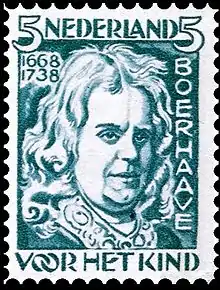Jan Sluyters
Johannes Carolus Bernardus (Jan) Sluijters, or Sluyters (17 December 1881 in 's-Hertogenbosch – 8 May 1957 in Amsterdam) was a Dutch painter.
.jpg.webp)
Sluijters (in English often spelled "Sluyters") was a leading pioneer of various post-impressionist movements in the Netherlands.[1] He experimented with several styles, including fauvism and cubism, finally settling on a colorful expressionism. His paintings feature nude studies, portraits, landscapes, and still lifes. His work was part of the painting event in the art competition at the 1928 Summer Olympics.[2]
Legacy
A number of streets are named after him in the Netherlands, including one in the neighborhood of streets named after 19th and 20th century Dutch painters in Overtoomse Veld-Noord, Amsterdam.
Public collections

Among the public collections holding works by Jan Sluyters are:
- Dordrechts Museum, Dordrecht, The Netherlands
- Drents Museum, Assen, The Netherlands
- Museum Boijmans Van Beuningen, Rotterdam, The Netherlands
- Noordbrabants Museum, Den Bosch, The Netherlands
- Nederlands Steendrukmuseum, Valkenswaard, The Netherlands
- Rijksmuseum Amsterdam, The Netherlands
- Singer Museum, Laren, The Netherlands
- Stedelijk Museum Alkmaar, Alkmaar, The Netherlands
- Van Abbemuseum, Eindhoven, The Netherlands
- Van Gogh Museum, Amsterdam, The Netherlands
- Museum de Fundatie, Zwolle, The Netherlands
References
Notes
- Jan Sluijters [1881-1957] - Find, Price & Research on Artfact.com
- "Jan Sluyters". Olympedia. Retrieved 26 July 2020.
Sources
- de Raad, Jacqueline; Raassen-Kruimel, Emke; de Vries, Jan; Mieke van der Wal; Louise Wijnberg (2011). Jan Sluijters 1881-1957 (in Dutch). Bussum: Thoth. ISBN 978-90-6868-586-2.
